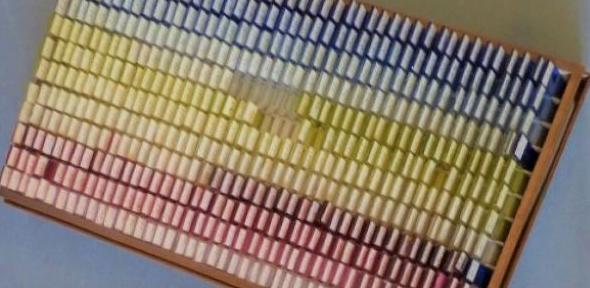
The study of colour lies at the intersection of physics, physiology and psychology. This has resulted in fascinating experiments and unexpected collaborations between artists and chemists, industrialists and anthropologists, philosophers and poets, who have asked where colours come from, how they behave, and how we perceive them.
This exhibition explores three important themes from the history of colour science as represented in the Whipple Library and Museum’s collections: the landmark experiments of Robert Boyle and Isaac Newton, which shaped the work of physicists for the next 150 years; industrial innovations from the late 19th century which explored new ways of producing and standardising colours in brewing, painting, and human sight; and studies from experimental physiology and psychology that analysed the complex interactions of eye and brain in sensory perception.
Cambridge connections are well represented through the provenance of the material on display, including books from the collections of Robert Whipple, J.H. Steward and James Clerk Maxwell, and a set of Tintometer slides from the University’s Balfour Laboratory, the pioneering biological laboratory for educating women that operated between 1881 and 1914.
By Claire Sabel (HPS MPhil student, 2014-15), assisted by Clare Matthews
On display September 2015 - February 2016
